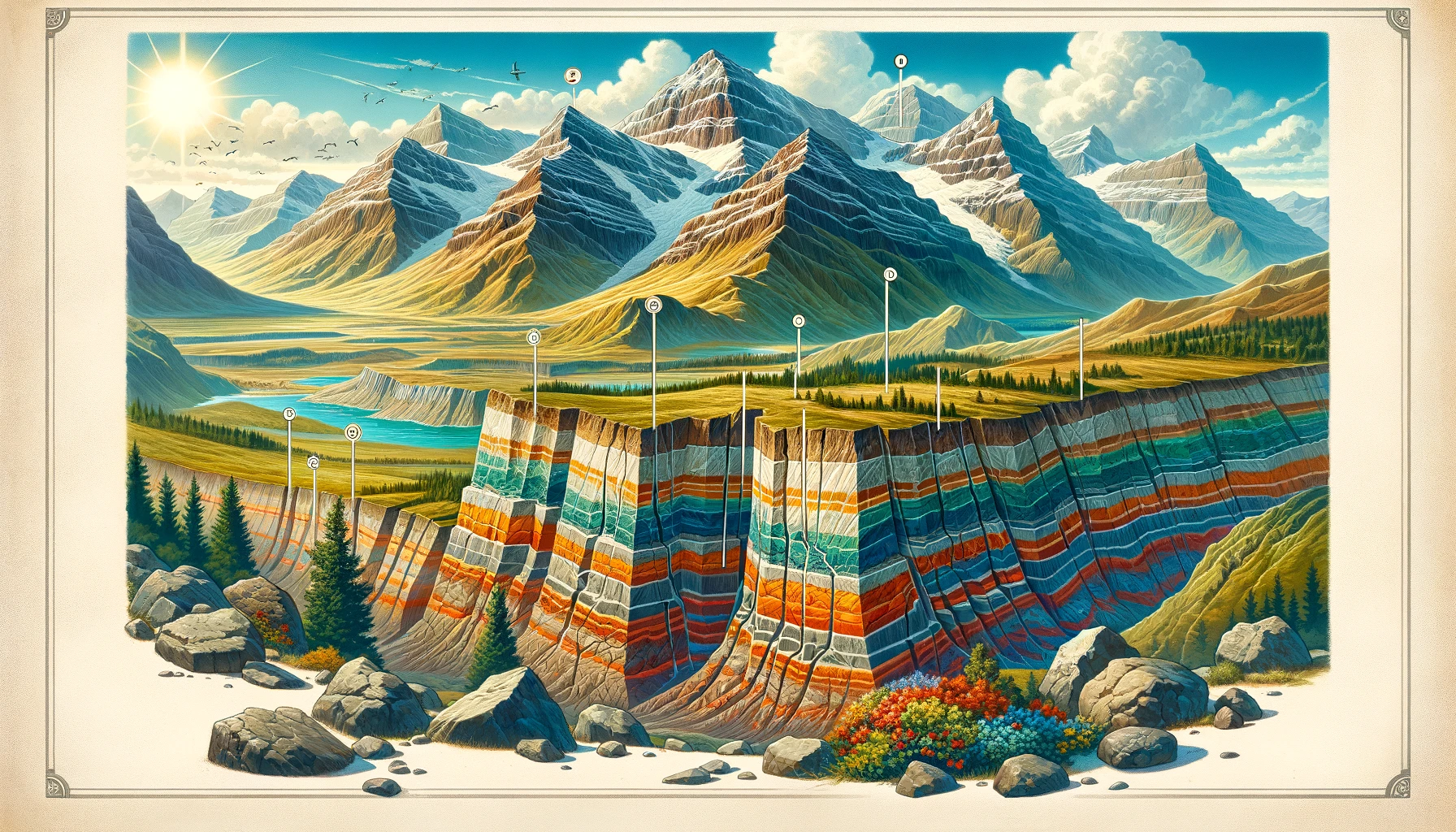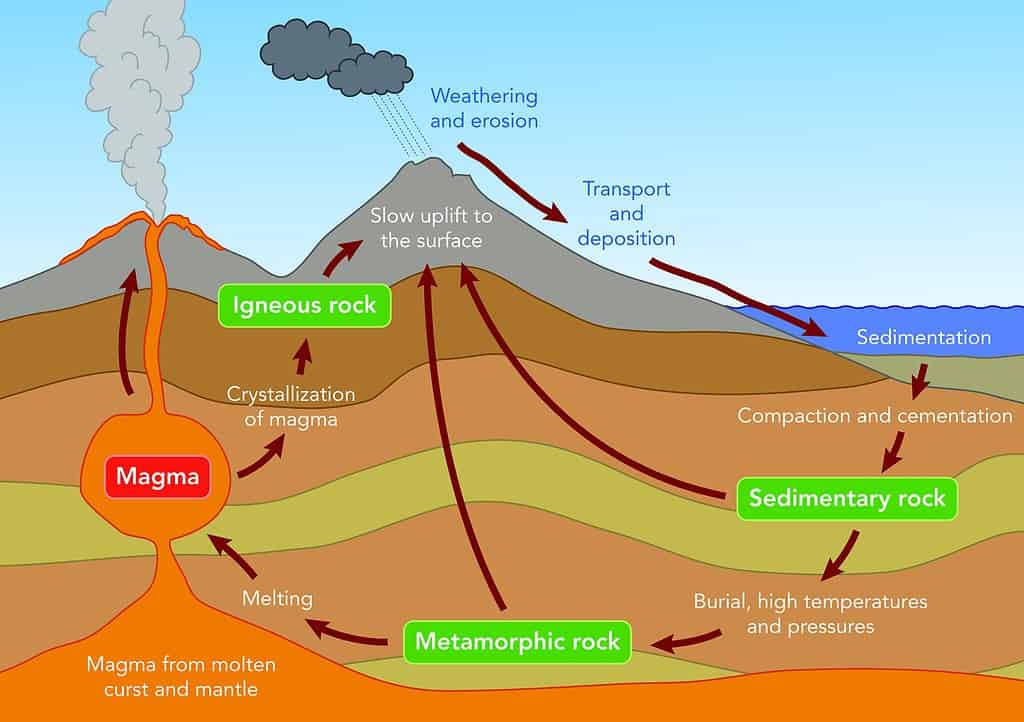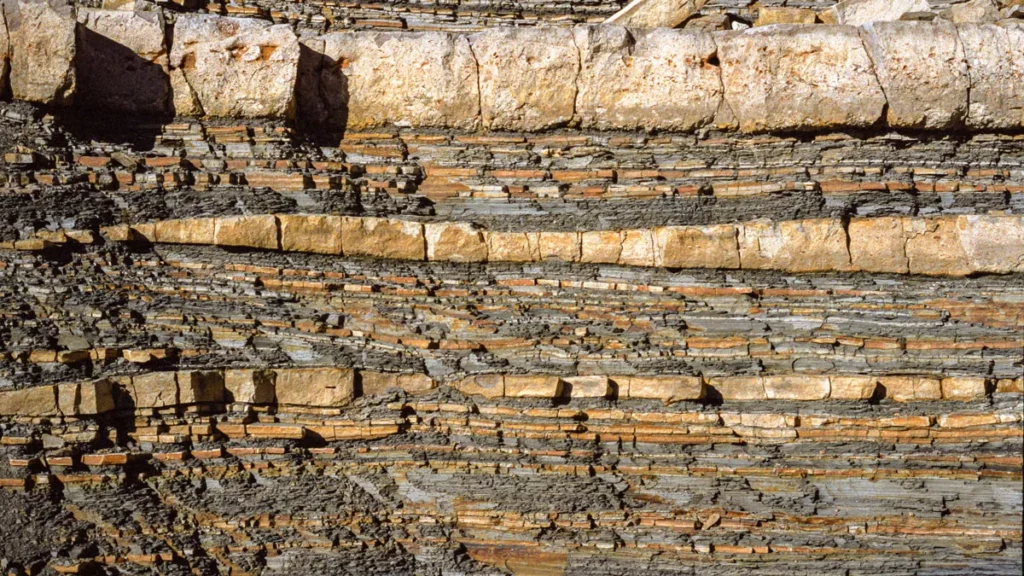Rocks are historical records that describe Earth’s past through the stories of one form changing to another, recycling matter from place to place—this is called the rock cycle. This rock cycle forms the very core of the dynamic nature of the planet.
There are many processes and factors that come into play in the rock cycle but two are common in nearly all cases: temperature and pressure. So, let’s look at the all-important pressure and its role in geology.

How pressure affects rock formation
Pressure is the invisible sculptor of geology. It represents a force bringing the weight of the overlying rocks, sediments, and other materials. In particular, this force plays a critical role in the formation of metamorphic rocks — but sedimentary and igneous rocks are also greatly influenced by pressure.
Think of pressure in rock formation like a baker kneading dough. Under the Earth’s surface, pressure increases with depth. Sediments get buried — more pressure. Tectonic forces move rocks around — more pressure. Most geological processes involve some type of pressure. This pressure can rearrange the minerals within rocks, causing them to recrystallize and change texture, without melting. The result is often metamorphic rock with a completely new identity.

Lesser pressures can also play a role in the formation of other types of rock. For instance, pressure pushes loose sediments together to form sedimentary rocks, in a process called diagenesis. For igneous rocks, immense pressures can also shape the resulting rock.
Pressure vs. Temperature
While temperature often partners with pressure in rock metamorphism, their roles are distinct. Temperature primarily influences the chemical reactions, leading to recrystallization. Pressure, on the other hand, influences the rock’s physical structure, aligning and flattening minerals. It’s like the difference between baking a cake (temperature) and shaping it (pressure).
A good example is limestone, which gets converted into marble under high pressure. The grains of calcite in the limestone increase, getting tightly locked into each other to produce marble.
Pressure affects all rocks on Earth. The deeper they’re buried, the more pressure they’re under. Lava and magma are no exception.
Journey Deep Beneath the Earth’s Surface

To truly appreciate the role of pressure in rock formation, we must venture into the depths of the Earth. Here, conditions are vastly different from the surface world we are familiar with.
The Earth is layered like a giant onion, with the crust on the outside, followed by the mantle, and the core at the center. As we go deeper, the weight of the overlying layers increases, and so does the pressure. At depths of tens to hundreds of kilometers, the pressure is immense, capable of transforming rocks in ways that are hard to imagine on the surface.
Pressure increases approximately linearly with depth. This means the deeper you go, the greater the pressure. In the upper crust, pressure might be relatively low, but in the lower crust and upper mantle, it’s high enough to change the very structure of rocks. This affects different types of rocks in different ways
Igneous rocks may become denser and more compact. Sedimentary rocks, often formed in layers, can become tightly packed and may lose their original porosity. Metamorphic rocks, already shaped by pressure and heat, might undergo further transformation, developing even more complex structures.
Examples of rocks formed under different pressures
- Sandstone: Formed from sand-sized minerals or rock grains. The layers of sand accumulate in oceans, lakes, or deserts and are compressed under the pressure of overlying layers.
- Limestone: Typically forms in clear, warm, shallow marine waters through accumulation of biological debris, like shells, and is compacted under mild to moderate pressure over a long time.
- Marble: This rock originates as limestone and then is subjected to intense pressure and high temperatures within the Earth’s crust, causing profound physical and chemical change.
- Slate: Forms from the low-to-moderate pressure metamorphism of shale. The pressure realigns the clay minerals in shale, making the rock foliated and fissile.
Pressure in large-scale geology

So far, we’ve mentioned the role of pressure in forming rocks. But we should note that pressure plays a role in larger, tectonic processes as well.
The majestic Himalayan mountains are a testament to the power of pressure. Formed by the collision of the Indian and Eurasian tectonic plates, this immense pressure pushed the Earth’s crust upwards, creating the tallest mountain range on Earth. The rocks here, once part of the ocean floor, were transformed under extreme pressure and uplifted to form towering peaks.
The Grand Canyon, with its layered sedimentary rocks, reveals a different aspect of pressure’s role. Over millions of years, sediments deposited by ancient rivers and seas were compressed into rock layers. Erosion then sculpted these layers into the breathtaking vistas we see today.
Italy’s famous Carrara marble is a prime example of limestone transformed under pressure into beautiful, high-quality marble. This marble has been prized for centuries for its purity and was used by Michelangelo for his sculptures.
Conclusion
From igneous to sedimentary to metamorphic, each rock type tells a story of transformation under pressure, revealing Earth’s dynamic nature.
Understanding these processes not only satisfies our curiosity but also provides insights into Earth’s history, resources, and the landscapes we cherish. As you encounter rocks in your daily life, remember the incredible journey they have taken, shaped by the invisible yet mighty hand of pressure.






